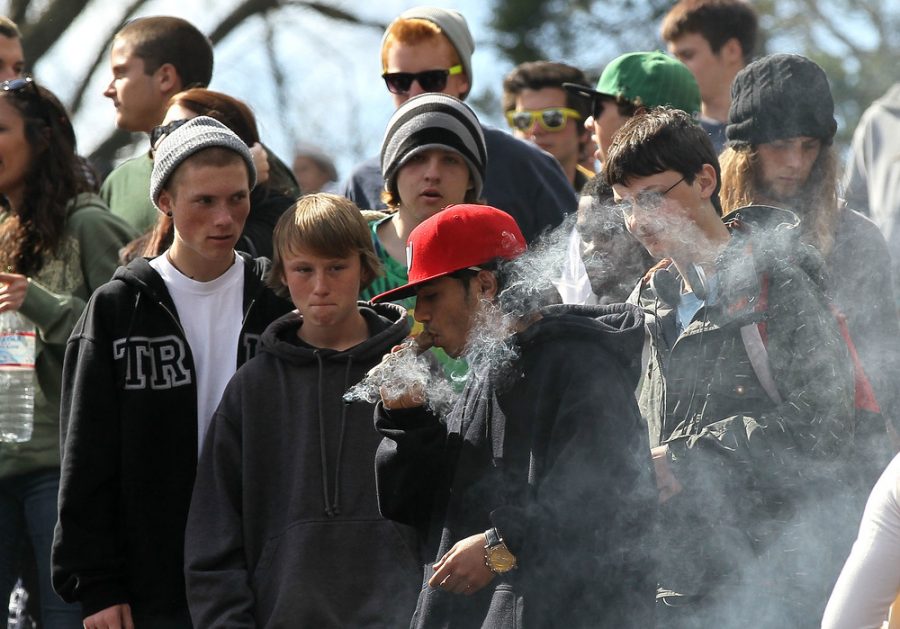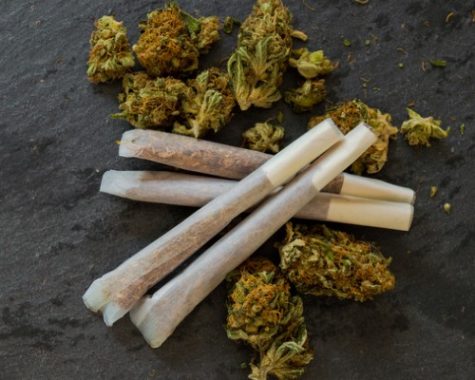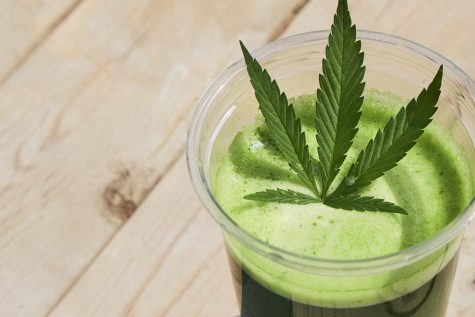NIH-funded study suggests that youth cannabis consumption does not rise after legalization
Youth cannabis consumption does not rise after states introduce medical or recreational laws. This is according to a team of researchers, who recently published their findings in the Journal of the American Medical Association (JAMA).
The study on youth cannabis consumption post-legalization was released on Tuesday, September 7. Rather than causing consumption rates to skyrocket, policy change appears to have created a “statistically indistinguishable from zero” impact on overall adolescent cannabis consumption.
Factually, the researchers discovered that regulated cannabis models across the U.S. result in lower rates of consumption among adolescents; albeit under specific measures. The findings go against what anti-cannabis lobbyists usually say about legalization — that it influences young people to dabble in the federally illegal, yet natural, substance.
Consumption data was collected from the years 1993-2019, with 10 medical or adult-use cannabis states being the primary focus of this study on youth cannabis consumption post-legalization. The findings add to existing study insights into the impact that cannabis reform laws have had on youth consumption, most of which have reached similar conclusions.
Researchers found that recreational cannabis legalization “was not associated with current cannabis use or frequent cannabis use.” Further, “medical cannabis law (MML) adoption was associated with a six percent decrease in the odds of current cannabis use and a seven percent decrease in the odds of frequent cannabis use.”
Study on youth cannabis consumption post-legalization was partially funded by NIH
The National Institutes of Health (NIH), which is responsible for supporting scientific studies that help to bolster the nation’s medical research industry, proudly funded this study on youth cannabis consumption post-legalization. Funding from such a reputable organization contributed to the investigation’s overall credibility.
In addition to the aforementioned findings, researchers determined that youth cannabis consumption reduced in states that had enacted adult-use cannabis legalization for at least two years or more.
“Consistent with estimates from prior studies, there was little evidence that RMLs or MMLs encourage youth [cannabis] use,” wrote the researchers. “As more post-legalization data become available, researchers will be able to draw firmer conclusions about the relationship between RMLs and adolescent [cannabis] use.”
Authors of the study did not divulge any theories as to why the youth demographic may be shying away from cannabis use in their legal states. However, supporters of legalization are not overly surprised, with many remaining firm on their belief that legal and regulated sales would deter people from the black market and minimize youth access.
“This study provides additional evidence that legalizing and regulating cannabis does not result in increased rates of use among teens,” deputy director of the Marijuana Policy Project, Matthew Schweich, said to Marijuana Moment reporters. “In fact, it suggests that cannabis legalization laws might be decreasing teen use.”
Schweich went on to say that the findings “make sense” due to the fact that legally operating cannabis businesses must abide by strict identification-checking rules when serving customers. He noted that the unregulated market does not impose the same protections as the legal market and that prohibitionists are wrongly trying to sustain illicit avenues of cannabis sales.
The JAMA study’s findings were also supported by the director of the National Institute on Drug Abuse (NIDA), Nora Volkow. During an interview with reporters, she said that cannabis legalization has not yet contributed to increased youth cannabis consumption, in spite of her previous concerns.
Notably, she said that she was “expecting the use of [cannabis] among adolescents would go up” once states enacted legalization, but soon realized that “overall, it hasn’t.” She spoke these words during a podcast with founder of the Drug Policy Alliance, Ethan Nadelmann who, Volkow says, was “right” about the influence that policy change has had on the youth demographic.
Federal report challenged prohibitionist approach to state-level cannabis legalization
The NIH-funded study isn’t the only one to shatter unsubstantiated claims regarding the potentially negative effect that legalization has on younger people. A May-released report also argued against the misconception, with the findings indicating that state-level cannabis legalization deters youths from using the plant.
In a separate analysis, researchers from the U.S. Department of Education’s National Center for Education Statistics assessed youth surveys of high school students. The data was published between the years 2009 and 2019. As per the results, “no measurable difference” was found in regards to the percentage of youths in grades 9-12 who reported consuming the plant on at least one occasion within the last 30 days.
Moreover, the Centers for Disease Control and Prevention discovered that cannabis consumption among high school students sank during the pinnacle of state-legal recreational cannabis legalization.
Let’s not forget about the statement that was released by an official with the White House Office of National Drug Control Policy’s National Marijuana Initiative in 2020, too. According to the official, youth cannabis use “is going down” in Colorado and in other states with legal markets. This, the White House official said, is “a good thing,” even if the reasons why remain unclear.
The NIH-funded study isn’t the only one to shatter unsubstantiated claims regarding the potentially negative effect that legalization has on younger people. A May-released report also argued against the misconception, with the findings indicating that state-level cannabis legalization deters youths from using the plant.
In a separate analysis, researchers from the U.S. Department of Education’s National Center for Education Statistics assessed youth surveys of high school students. The data was published between the years 2009 and 2019. As per the results, “no measurable difference” was found in regards to the percentage of youths in grades 9-12 who reported consuming the plant on Sat least one occasion within the last 30 days.
Moreover, the Centers for Disease Control and Prevention discovered that cannabis consumption among high school students sank during the pinnacle of state-legal recreational cannabis legalization.
Let’s not forget about the statement that was released by an official with the White House Office of National Drug Control Policy’s National Marijuana Initiative in 2020, too. According to the official, youth cannabis use “is going down” in Colorado and in other states with legal markets. This, the White House official said, is “a good thing,” even if the reasons why remain unclear.










